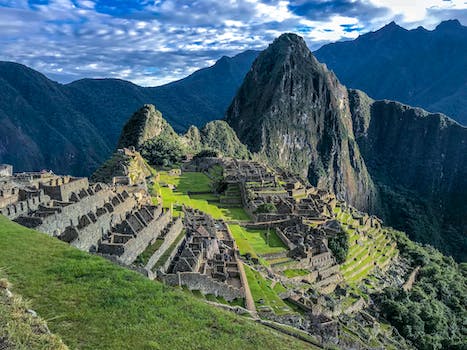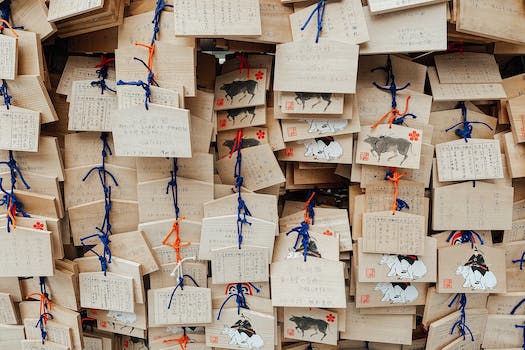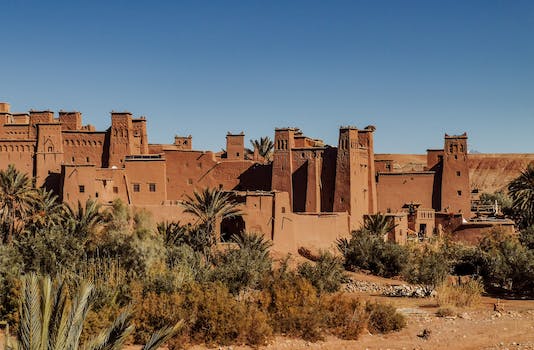Welcome to The Ultimate Guide to Adventure Travel in Peru. Peru is a stunning country located in South America, renowned for its rich history, diverse landscapes, and thrilling outdoor activities. Whether you’re an adrenaline junkie, a nature enthusiast, or a culture lover, Peru offers endless opportunities for adventure. From hiking the iconic Inca Trail to exploring the Amazon rainforest, this guide will provide you with all the essential information and tips to make your adventure travel in Peru an unforgettable experience. Let’s embark on this thrilling journey together!
- 1. Overview of Adventure Travel in Peru
- 1.1. Why choose Peru for adventure travel
- 1.2. Top adventure activities in Peru
- 1.3. Best time to visit for adventure travel
- 1.4. Safety tips for adventure travel in Peru
- 1.5. Popular adventure travel destinations in Peru
- 2. Hiking and Trekking in Peru
- 2.1. Famous hiking trails in Peru
- 2.2. Challenges and rewards of hiking in Peru
- 2.3. Guided vs. independent trekking
- 2.4. Essential gear for hiking in Peru
- 2.5. Tips for a successful hiking trip in Peru
- 3. Water Sports and Rafting in Peru
1. Overview of Adventure Travel in Peru
Adventure travel in Peru offers an exhilarating experience for thrill-seekers and nature lovers alike. With its diverse landscapes and rich cultural heritage, Peru is a captivating destination that promises endless opportunities for adventure. From trekking through the majestic Andes Mountains to exploring the depths of the Amazon rainforest, there is no shortage of adrenaline-pumping activities to partake in. Whether you’re an avid hiker, a water sports enthusiast, or a wildlife enthusiast, Peru has something to offer for everyone seeking an unforgettable adventure.
1.1. Why choose Peru for adventure travel
Peru is a destination that should be at the top of every adventure traveler’s list. With its diverse landscapes, rich history, and vibrant culture, this South American gem offers endless opportunities for thrilling and unforgettable experiences.
One of the main reasons why Peru is an ideal choice for adventure travel is its stunning natural beauty. From the towering peaks of the Andes Mountains to the lush Amazon rainforest, Peru is a playground for outdoor enthusiasts. Hiking the Inca Trail to reach the ancient ruins of Machu Picchu is a bucket list experience for many adventurers.
Aside from its breathtaking landscapes, Peru is also home to a variety of adrenaline-pumping activities. Whether you’re into white-water rafting, paragliding, or sandboarding on the desert dunes, Peru has it all. The country’s diverse geography provides the perfect backdrop for these thrilling adventures.
Moreover, Peru’s rich cultural heritage adds an extra layer of excitement to any adventure trip. Exploring the ancient ruins of the Inca civilization, visiting indigenous communities, and immersing oneself in traditional Peruvian festivals are just a few ways to experience the country’s vibrant culture firsthand.
In summary, Peru offers a unique blend of natural beauty, thrilling activities, and cultural experiences, making it an unbeatable destination for adventure travel. Whether you’re seeking adrenaline-fueled activities or a deeper connection with history and culture, Peru has something for every adventurous soul.
1.2. Top adventure activities in Peru
Peru is a haven for adventure enthusiasts, offering a wide range of thrilling activities that cater to all levels of experience. From exploring ancient ruins to trekking through breathtaking landscapes, here are some of the top adventure activities to indulge in while visiting Peru:
1. Machu Picchu Trek: Embark on the world-famous Inca Trail and hike through the stunning Andean mountain range to reach the iconic Machu Picchu. This multi-day trek offers breathtaking views and an unparalleled sense of accomplishment.
2. Amazon Rainforest Expedition: Immerse yourself in the unparalleled biodiversity of the Amazon Rainforest. Take a guided expedition deep into the jungle, where you can spot exotic wildlife, learn about indigenous cultures, and navigate the mighty Amazon River.
3. Sandboarding in Huacachina: Head to the desert oasis of Huacachina and experience the adrenaline rush of sandboarding. Glide down towering sand dunes on a board, or try your hand at dune buggying for an extra thrill.
4. White Water Rafting on the Urubamba River: Brace yourself for an exhilarating white water rafting adventure on the Urubamba River. Navigate through rapids of varying difficulty levels, surrounded by the stunning natural beauty of the Sacred Valley.
5. Paragliding in Lima: Soar high above the vibrant city of Lima and experience the thrill of paragliding. Enjoy panoramic views of the Pacific Ocean, Miraflores district, and the city skyline as you glide through the air.
6. Colca Canyon Trek: Embark on a challenging trek through the Colca Canyon, one of the world’s deepest canyons. Marvel at the majestic condors soaring above, explore traditional Andean villages, and soak in hot springs to rejuvenate after a long day of hiking.
7. Surfing in Mancora: If you’re a fan of water sports, head to the coastal town of Mancora and catch some waves. With consistent swells and warm waters, it’s the perfect spot for beginners and experienced surfers alike.
8. Mountain Biking in the Sacred Valley: Hop on a mountain bike and explore the scenic Sacred Valley. Ride through picturesque towns, ancient Inca ruins, and breathtaking landscapes, all while enjoying the fresh mountain air.
These are just a few of the many thrilling adventure activities awaiting you in Peru. Whether you’re seeking adrenaline-pumping experiences or simply want to immerse yourself in the awe-inspiring natural beauty, Peru has something for everyone.
1.3. Best time to visit for adventure travel
Peru is a country that offers an abundance of adventure travel opportunities throughout the year. With its diverse landscapes, ranging from the towering peaks of the Andes to the lush Amazon rainforest, there is something for every adventure enthusiast. Whether you are seeking adrenaline-pumping activities or a chance to immerse yourself in nature, Peru has it all.
The best time to visit Peru for adventure travel largely depends on the specific activities you are interested in. The country experiences two distinct seasons – the dry season and the wet season.
The dry season in Peru runs from May to September, making it the most popular time for adventure travelers. During this time, the weather is generally clear and sunny, providing ideal conditions for activities such as hiking, mountain biking, and rock climbing in the Andes. The Inca Trail, a famous trek to the ancient city of Machu Picchu, is particularly popular during this period.
On the other hand, the wet season in Peru lasts from October to April, with the heaviest rainfall occurring between December and March. While this period may not be ideal for some activities, it offers unique opportunities for adventure travelers. The rainforests of the Amazon Basin come to life with vibrant colors and abundant wildlife, making it a perfect time for jungle hikes, wildlife spotting, and river cruises.
Ultimately, the best time to visit Peru for adventure travel depends on your preferences and the specific activities you wish to engage in. It is advisable to research and plan your trip accordingly to make the most out of your adventure in Peru.
1.4. Safety tips for adventure travel in Peru
When embarking on an adventure travel journey in Peru, it is essential to prioritize safety to ensure a memorable and enjoyable experience. Peru offers a multitude of thrilling activities such as hiking the Inca Trail, exploring the Amazon rainforest, and conquering the peaks of the Andes. To make the most of your adventure while staying safe, here are some important tips to keep in mind:
1. Research and plan your trip: Before setting off, thoroughly research the destinations you plan to visit and the activities you wish to partake in. Familiarize yourself with the local customs, laws, and potential risks. It is also advisable to create a detailed itinerary and share it with someone reliable.
2. Stay updated on travel advisories: Check the latest travel advisories and warnings issued by your country’s government or reputable travel agencies. These advisories provide valuable information regarding safety concerns, political instability, natural disasters, and health risks in specific areas.
3. Choose a reputable tour operator: When booking adventure tours or activities, opt for a well-established and licensed tour operator. Read reviews, compare prices, and ensure that the company follows proper safety protocols. A reputable operator will prioritize your safety and provide experienced guides.
4. Pack essential safety gear: Depending on the activities you plan to undertake, pack necessary safety equipment such as helmets, life jackets, sturdy hiking boots, and first aid kits. It is also advisable to carry a reliable GPS device or map and a means of communication in case of emergencies.
5. Stay vigilant and aware: While exploring Peru’s stunning landscapes, be mindful of your surroundings at all times. Stay alert for any potential dangers or suspicious activities. Avoid displaying valuable items openly and be cautious when interacting with strangers.
6. Follow local guidelines and regulations: Respect the local laws and regulations of the places you visit. Pay attention to warning signs, follow designated trails, and adhere to the instructions of your tour guides. Engaging in reckless behavior can put yourself and others at risk.
7. Take proper precautions for altitude sickness: Many adventure activities in Peru involve high altitudes, especially in the Andes. To prevent altitude sickness, acclimatize properly by spending a few days in lower-altitude areas before attempting strenuous activities. Stay hydrated, eat light meals, and avoid alcohol and smoking.
8. Purchase travel insurance: Before embarking on your adventure travel to Peru, ensure you have comprehensive travel insurance that covers medical emergencies, trip cancellations, and theft or loss of personal belongings. Check the policy details and understand the procedures for making claims.
By following these safety tips, you can fully immerse yourself in the adventure travel experience in Peru while minimizing potential risks and ensuring a memorable journey.
1.5. Popular adventure travel destinations in Peru
Peru, a country rich in natural wonders and ancient civilizations, offers a plethora of adventure travel destinations that will satisfy even the most daring adventurers. From exploring the mystical ruins of Machu Picchu to trekking through the Amazon rainforest, Peru has something for everyone seeking an adrenaline-filled journey.
One of the most popular adventure travel destinations in Peru is the Sacred Valley. Located near Cusco, this picturesque valley is dotted with ancient Inca ruins, charming villages, and breathtaking landscapes. Adventurers can go hiking or mountain biking along the ancient Inca trails, visit local communities to immerse themselves in the culture, or try their hand at adrenaline-pumping activities such as white-water rafting or zip-lining.
Another must-visit destination for adventure enthusiasts is the iconic Inca Trail. This ancient trail, spanning over 26 miles, takes travelers through stunning Andean scenery, cloud forests, and high mountain passes, ultimately leading to the magnificent Machu Picchu. The trek is challenging but rewarding, offering unparalleled views and the chance to experience the history and spirituality of the Incas.
For those seeking a unique and off-the-beaten-path adventure, the Peruvian Amazon is a dream come true. Exploring the world’s largest tropical rainforest, adventurers can embark on jungle hikes, spot exotic wildlife, navigate the mighty Amazon River, and even stay in eco-lodges deep within the wilderness. This biodiverse region offers endless opportunities for adventure, from wildlife encounters to canopy tours and night safaris.
In addition to these popular destinations, Peru also boasts other thrilling adventure options such as sandboarding on the dunes of Huacachina, paragliding over Lima’s coastal cliffs, or taking a scenic flight over the mysterious Nazca Lines. With its diverse landscapes and rich cultural heritage, Peru truly is a paradise for adventure enthusiasts.
2. Hiking and Trekking in Peru
Peru is a paradise for hiking and trekking enthusiasts. With its diverse landscapes, ancient ruins, and breathtaking natural beauty, it offers countless opportunities for outdoor adventure. Whether you are an experienced hiker or a beginner looking for a thrilling challenge, Peru has something to offer for everyone.
One of the most famous hiking destinations in Peru is the Inca Trail. This ancient trail takes you through the stunning Andean mountain range, leading you to the iconic Machu Picchu. The Inca Trail is a four-day trek that requires a moderate level of fitness, but the reward is well worth the effort. As you hike along the trail, you will pass through stunning landscapes, including cloud forests, mountain passes, and Inca ruins.
Another popular hiking destination in Peru is the Colca Canyon. Known as one of the deepest canyons in the world, it offers spectacular views and challenging trails. Hiking in the Colca Canyon allows you to explore the Andean wilderness, spot rare bird species, and witness traditional Andean villages.
If you are up for a more adventurous trek, consider hiking to the Rainbow Mountain. Situated at over 5,000 meters above sea level, this colorful mountain offers a unique and rewarding experience. The hike to Rainbow Mountain is challenging, but the panoramic views of the vibrant striped slopes make it all worthwhile.
Peru’s diverse landscapes also provide opportunities for multi-day treks. The Santa Cruz Trek in the Cordillera Blanca is a popular choice for those seeking a longer hiking adventure. This four to five-day trek takes you through picturesque valleys, turquoise lakes, and snow-capped peaks.
Whether you choose to hike the iconic Inca Trail, explore the depths of Colca Canyon, conquer Rainbow Mountain, or embark on a multi-day trek, hiking in Peru will leave you with unforgettable memories. Just make sure to come prepared with proper gear, acclimatize to the altitude, and respect the natural environment and local communities.
2.1. Famous hiking trails in Peru
Peru is a dream destination for adventure enthusiasts, offering some of the most breathtaking hiking trails in the world. Whether you are an experienced hiker or a beginner looking for an exciting challenge, Peru has something to offer for everyone. From the iconic Inca Trail to lesser-known hidden gems, here are some of the famous hiking trails in Peru that should be on every adventurer’s bucket list:
1. Inca Trail: The Inca Trail is undoubtedly one of the most famous and popular hiking trails in Peru. This ancient trail takes you through the stunning Andes Mountains, passing by numerous Inca ruins and breathtaking landscapes. The highlight of the trail is the majestic Machu Picchu, an architectural marvel and one of the New Seven Wonders of the World.
2. Salkantay Trek: For those seeking a more challenging adventure, the Salkantay Trek is an excellent choice. This challenging trail takes you through diverse ecosystems, from snow-capped mountains to lush tropical forests. The trail offers stunning views of the Salkantay Mountain and culminates with a visit to Machu Picchu.
3. Huayna Picchu: If you are up for a shorter but steep hike, the Huayna Picchu trail is perfect. This trail leads to the iconic mountain peak behind Machu Picchu, offering spectacular panoramic views of the ancient city and the surrounding valleys.
4. Choquequirao Trek: For those seeking a more off-the-beaten-path adventure, the Choquequirao Trek is a hidden gem. This challenging trail takes you to the remote archaeological site of Choquequirao, often referred to as the sister city of Machu Picchu. The trek offers breathtaking views of the rugged Andean landscapes.
5. Ausangate Trek: The Ausangate Trek is a remote and less crowded trail that takes you through the stunning landscapes of the Ausangate Mountain region. This challenging trek offers breathtaking views of snow-capped mountains, high-altitude lagoons, and traditional Andean villages.
These are just a few examples of the famous hiking trails in Peru. Whether you choose to hike the iconic Inca Trail or explore lesser-known trails, hiking and trekking in Peru will undoubtedly leave you with unforgettable memories and a deep appreciation for the country’s natural beauty.
2.2. Challenges and rewards of hiking in Peru
Hiking and trekking in Peru offer both challenges and rewards for adventurous travelers. The diverse and rugged terrain of the Peruvian Andes presents numerous obstacles that make hiking in this region a thrilling experience. From steep mountain passes to high altitude conditions, hikers must be prepared for physically demanding trails. However, the rewards of conquering these challenges are immense.
One of the main challenges of hiking in Peru is the high elevation. Many popular hiking routes, such as the Inca Trail to Machu Picchu, reach altitudes above 4,000 meters (13,000 feet). This can lead to altitude sickness, a condition caused by the lack of oxygen at higher altitudes. Hikers need to acclimatize properly and take necessary precautions to avoid this discomfort.
Another challenge is the unpredictable weather in the mountains. Peru’s climate can vary greatly depending on the region and time of year. Hikers may encounter extreme temperature fluctuations, heavy rainfall, or even snowfall during their trek. It is essential to pack appropriate clothing and gear to withstand these changing weather conditions.
Despite the challenges, hiking in Peru offers incredible rewards. The breathtaking landscapes and stunning natural beauty of the Andes make every step worthwhile. Hikers are treated to panoramic views of snow-capped peaks, lush valleys, and ancient ruins. The sense of achievement upon reaching a mountain summit or completing a long-distance trek is unmatched.
Moreover, hiking in Peru provides a unique opportunity to immerse oneself in the rich cultural heritage of the region. Many hiking trails pass through remote villages where travelers can interact with local indigenous communities and learn about their traditions and way of life.
In conclusion, hiking and trekking in Peru present both challenges and rewards. The physical demands and unpredictable nature of the terrain can be daunting, but the awe-inspiring landscapes and cultural experiences make it an unforgettable adventure for those who dare to explore the trails of Peru.
2.3. Guided vs. independent trekking
When planning a trekking adventure in Peru, one of the first decisions you’ll need to make is whether to go for a guided or independent trek. Both options have their own set of advantages and considerations to keep in mind.
Guided trekking is a popular choice for those who prefer a more structured and organized experience. With a knowledgeable guide leading the way, you can rest assured that you will not only stay on the right path but also learn about the local culture, history, and environment along the way. Guides can provide valuable insights, help with navigation, and ensure your safety throughout the trek. Additionally, they can arrange for accommodations, meals, and permits, saving you the hassle of making logistical arrangements.
On the other hand, independent trekking offers a greater sense of freedom and flexibility. If you enjoy solitude and the thrill of self-discovery, trekking independently allows you to set your own pace and itinerary. You can explore off-the-beaten-path trails, take detours, and fully immerse yourself in the natural beauty of Peru at your own leisure. However, it’s important to note that independent trekking requires thorough planning, knowledge of the route, and a good level of fitness and self-reliance. You’ll need to carry your own gear, arrange accommodations and permits, and be prepared to handle any unexpected situations that may arise.
Ultimately, the choice between guided and independent trekking depends on your personal preferences, experience level, and the type of adventure you seek. Whether you opt for the structured support of a guide or the freedom of independent exploration, trekking in Peru is sure to reward you with breathtaking landscapes, unique cultural encounters, and unforgettable memories.
2.4. Essential gear for hiking in Peru
When it comes to hiking in Peru, having the right gear is essential for a successful and enjoyable adventure. The diverse terrain and unpredictable weather conditions make it important to be well-prepared. Here are some must-have items for your hiking and trekking expedition in Peru:
1. Sturdy Hiking Boots: Invest in a pair of high-quality hiking boots that provide excellent ankle support and grip. The rugged trails and uneven surfaces in Peru require durable footwear.
2. Lightweight Backpack: A good backpack is essential for carrying all your essentials while keeping your hands free. Look for a backpack with multiple compartments and adjustable straps for a comfortable fit.
3. Layers of Clothing: Peru’s climate can vary greatly depending on the region and altitude. Layering your clothing allows you to adjust to different temperatures. Pack lightweight and breathable clothing that can be easily layered.
4. Waterproof Jacket: Be prepared for sudden rain showers by bringing a waterproof jacket. Look for a jacket that is both waterproof and breathable to keep you dry and comfortable.
5. Trekking Poles: These can provide extra stability and support, especially when hiking on steep and challenging terrains. Invest in a pair of trekking poles to reduce strain on your knees and improve balance.
6. Sun Protection: Peru’s high altitude means stronger UV rays. Pack a wide-brimmed hat, sunglasses, and sunscreen with a high SPF to protect yourself from the sun.
7. Water and Snacks: It’s important to stay hydrated and energized during your hike. Carry a sufficient amount of water and pack nutritious snacks like energy bars, nuts, and dried fruits.
8. First Aid Kit: Always have a basic first aid kit with essentials like bandages, antiseptic ointment, pain relievers, and blister pads. It’s better to be prepared for any minor injuries.
Remember, proper gear is crucial for a safe and enjoyable hiking experience in Peru. Make sure to do your research and choose gear that is suitable for the specific trails and weather conditions you’ll encounter.
2.5. Tips for a successful hiking trip in Peru
Hiking and trekking in Peru offer incredible opportunities to explore the country’s stunning natural landscapes and experience its rich cultural heritage. To ensure a successful hiking trip in Peru, consider the following tips:
1. Plan and research: Before embarking on your hiking adventure, thoroughly research the trails, weather conditions, and difficulty levels. Familiarize yourself with the route, permits required, and any necessary gear or equipment.
2. Acclimatize properly: Many hiking routes in Peru reach high altitudes, so it’s crucial to acclimatize to the thinner air gradually. Spend a few days in a nearby town at a lower altitude before starting your hike to reduce the risk of altitude sickness.
3. Pack appropriately: Pack lightweight, moisture-wicking clothing suitable for various weather conditions. Don’t forget essential items such as sturdy hiking boots, a waterproof jacket, a hat, sunscreen, insect repellent, and a first aid kit.
4. Stay hydrated and nourished: Drink plenty of water during your hike to stay hydrated and prevent altitude-related illnesses. Carry high-energy snacks and consider bringing a water purification system if necessary.
5. Respect the environment and local communities: While hiking, make sure to follow Leave No Trace principles, dispose of waste properly, and respect the local customs and traditions. Be mindful of the fragile ecosystems and wildlife you may encounter along the way.
6. Use a reputable guide or tour operator: If you’re unfamiliar with the area or prefer a guided experience, consider hiring a knowledgeable guide or joining a reputable tour operator. They can provide valuable insights, ensure your safety, and enhance your overall hiking experience.
By following these tips, you’ll be well-prepared for a successful and memorable hiking adventure in Peru.
3. Water Sports and Rafting in Peru
Peru is a paradise for water sports enthusiasts and thrill-seekers. With its diverse landscapes, ranging from towering mountains to deep canyons and winding rivers, the country offers a wide array of water-based adventure activities. One of the most popular activities is rafting, which allows travelers to ride the rapids and navigate through stunning natural scenery.
The rivers in Peru provide excellent opportunities for both beginners and experienced rafters. The Urubamba River, located in the Sacred Valley near Cusco, offers exciting rapids ranging from Class II to Class IV. The river flows through breathtaking canyons and ancient Inca ruins, providing a unique and memorable rafting experience.
Another top destination for rafting is the Cotahuasi Canyon, one of the deepest canyons in the world. Located in southern Peru, this remote and challenging river offers adrenaline-pumping Class IV and V rapids. Rafting through the Cotahuasi Canyon is not for the faint of heart, but the breathtaking views and sense of accomplishment make it well worth the effort.
In addition to rafting, Peru also offers a variety of other water sports. Surfing is popular along the country’s long coastline, with famous surf spots such as Chicama and Mancora attracting surfers from around the world. Stand-up paddleboarding (SUP) is another popular activity, allowing travelers to explore Peru’s lakes and calm rivers while enjoying the tranquility of nature.
Whether you’re an adrenaline junkie or simply looking to enjoy the beauty of Peru’s waterways, there are plenty of options for water sports and rafting in this adventure-filled country.
3.1. Best rivers for rafting in Peru
Peru is a paradise for adventure seekers, especially for those who love water sports and rafting. With its diverse and stunning landscapes, this South American country offers numerous rivers that are perfect for an adrenaline-pumping rafting experience. Here are some of the best rivers for rafting in Peru:
1. Apurimac River: Known as one of the top ten rafting rivers in the world, the Apurimac River provides a thrilling rafting adventure. Flowing through the deep canyons of the Andes, this river offers challenging class III to V rapids and breathtaking views of the surrounding mountains.
2. Urubamba River: Located in the Sacred Valley, the Urubamba River is another popular choice for rafting enthusiasts. This river provides a mix of exciting rapids and tranquil stretches, making it suitable for both beginners and experienced rafters. The landscape along the Urubamba River is incredibly scenic, with verdant valleys and ancient Inca ruins.
3. Tambopata River: For those seeking a more remote and wild rafting experience, the Tambopata River is an excellent option. Located in the heart of the Amazon rainforest, this river offers a unique opportunity to navigate through dense jungle and spot diverse wildlife while tackling gentle to moderate rapids.
4. Colca River: Situated in the Colca Canyon, one of the deepest canyons in the world, the Colca River provides a thrilling rafting adventure combined with stunning natural beauty. Rafting on the Colca River allows you to admire towering cliffs, spot Andean condors soaring above, and experience challenging class III to IV rapids.
5. Vilcanota River: Flowing through the Vilcanota Valley, this river offers an exhilarating rafting experience surrounded by picturesque landscapes and traditional Andean villages. With class III to IV rapids, the Vilcanota River guarantees an adrenaline rush while showcasing the rich cultural heritage of the region.
Whether you are a seasoned rafter or a beginner looking for an unforgettable adventure, these rivers in Peru provide the perfect setting for an exhilarating and scenic rafting experience.
3.2. Different levels of difficulty for rafting
Rafting in Peru offers a wide range of difficulty levels, ensuring that there is something for everyone, from beginners to experienced thrill-seekers. Whether you are an adrenaline junkie or just looking for a fun and unique way to explore Peru’s stunning landscapes, there is a rafting adventure suited to your skill level.
For beginners and those seeking a more relaxed experience, there are plenty of gentle rivers and calm stretches ideal for introductory rafting trips. These sections are perfect for families or individuals who just want to enjoy the beauty of Peru’s rivers without too much excitement.
Intermediate rafters will find a variety of rivers with moderate rapids, providing a healthy dose of adrenaline and excitement. These sections require some prior experience and a basic understanding of rafting techniques, but they are still accessible to most adventure enthusiasts.
For the advanced rafters and adrenaline junkies, Peru offers some of the most challenging whitewater rapids in the world. The country is home to several Class IV and V rivers, which demand advanced skills and a strong physical condition. These high-intensity sections provide an unforgettable and heart-pumping experience for the most experienced rafters.
No matter your skill level or preference, rafting in Peru promises an incredible adventure filled with breathtaking scenery and thrilling rapids. So, gear up, join a professional rafting tour, and get ready to conquer the rivers of Peru!
3.3. Safety precautions for water sports
Water sports and rafting in Peru can be exhilarating experiences, but it is important to prioritize safety at all times. Here are some essential safety precautions to keep in mind before embarking on any water adventure in Peru:
1. Choose a reputable tour operator: When planning a water sports activity or rafting trip, always opt for a tour operator with an excellent reputation for safety. Research different operators, read reviews, and ensure they have certified guides and proper safety equipment.
2. Wear appropriate safety gear: Before hitting the water, make sure to wear the necessary safety gear. This may include a life jacket, helmet, wetsuit, or other protective equipment. It is crucial to follow the instructions provided by the guides regarding the proper use of these items.
3. Listen to the guides: Pay close attention to the instructions and guidelines provided by the guides. They are experienced professionals who understand the specific challenges and risks associated with water sports in Peru. Following their directions will help ensure a safe and enjoyable experience.
4. Be aware of your physical abilities: It is essential to be honest about your physical abilities and limitations. Choose activities that are suitable for your fitness level and do not hesitate to communicate any concerns or health issues to the guides. They can provide alternative options or make necessary adjustments to accommodate your needs.
5. Stay hydrated and protect yourself from the sun: Spending time in the water and under the sun can be physically demanding. Drink plenty of water to stay hydrated and apply sunscreen to protect your skin from harmful UV rays. It is also advisable to wear a hat and sunglasses.
6. Be mindful of the weather conditions: Weather conditions can significantly impact water sports activities. Pay attention to weather forecasts and be prepared for changes in conditions. Strong currents, high winds, or thunderstorms can pose risks, so it is important to follow the advice of the guides and postpone or cancel the activity if necessary.
By following these safety precautions, you can have a thrilling and safe water sports experience while exploring the beautiful waters of Peru.
3.4. Popular water sports destinations in Peru
Peru is a paradise for adventure enthusiasts, offering a wide range of thrilling water sports and rafting experiences. With its diverse and stunning natural landscapes, this South American country attracts adventurers from all over the world. Whether you are a beginner or an experienced thrill-seeker, Peru has something to offer for everyone.
One of the most popular water sports destinations in Peru is the Sacred Valley. Located near the ancient Inca capital of Cusco, the Sacred Valley is home to the mighty Urubamba River. This river provides an exhilarating rafting experience, with various rapids suitable for different skill levels. As you navigate through the stunning Andean scenery, you’ll be surrounded by breathtaking mountains and Inca ruins.
Another must-visit destination for water sports enthusiasts is the Colca Canyon. Known as one of the world’s deepest canyons, the Colca Canyon offers a unique rafting experience. The Colca River flows through this impressive canyon, providing a challenging and adrenaline-pumping adventure. As you conquer the rapids, you’ll also have the chance to spot the majestic Andean condors soaring above.
For those seeking a more relaxed water sports activity, Lake Titicaca is an ideal choice. Situated at a high altitude on the border of Peru and Bolivia, Lake Titicaca is the largest lake in South America. Here, you can enjoy kayaking or stand-up paddleboarding while taking in the stunning views of the surrounding snow-capped mountains and traditional Andean villages.
In addition to these destinations, Peru also offers fantastic surfing opportunities along its coastal areas. The beaches of northern Peru, such as Máncora and Chicama, are renowned for their consistent waves and attract surfers from all over the world. Whether you are a beginner or an advanced surfer, you’ll find the perfect spot to ride the waves and experience the thrill of the Pacific Ocean.
Overall, Peru is a dream destination for water sports and rafting enthusiasts. Its diverse landscapes, ranging from towering mountains to deep canyons and pristine lakes, provide endless opportunities for adventure. So, grab your gear and get ready to embark on an unforgettable water sports adventure in Peru!
3.5. Benefits of water sports for adventure seekers
Water sports provide a multitude of benefits for adventure seekers. Whether it’s rafting, kayaking, or surfing, these activities offer an exhilarating experience for those looking to push their limits and seek thrills. One of the main advantages of water sports is the physical workout they provide. Paddling against the currents or riding the waves requires strength, endurance, and balance, making it a great way to stay fit and improve overall fitness levels. Additionally, water sports allow individuals to connect with nature and appreciate the beauty of their surroundings. Exploring rivers, lakes, and oceans provides a unique perspective and allows adventurers to witness stunning landscapes and marine life. Moreover, participating in water sports can also be a great stress reliever. The combination of being in nature, the adrenaline rush, and the focus required to navigate the waters can help individuals relax and clear their minds. Lastly, these activities foster a sense of camaraderie and teamwork. Whether it’s paddling together in a raft or waiting for the perfect wave, water sports often require cooperation and communication among participants, leading to the development of strong bonds and shared experiences. Overall, water sports offer adventure seekers the opportunity to experience adrenaline-pumping thrills, stay fit, connect with nature, relieve stress, and build lasting relationships.
Conclusion
In conclusion, Peru offers an incredible array of adventure travel opportunities for thrill-seekers and nature enthusiasts. From exploring the ancient ruins of Machu Picchu to trekking through the breathtaking landscapes of the Amazon rainforest and the Andes Mountains, there is something for everyone in this diverse and culturally rich country. With its vibrant culture, delicious cuisine, and warm hospitality, Peru is truly a destination that should be on every adventurer’s bucket list.





